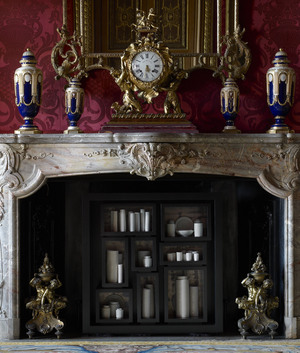Stockton, California filed bankruptcy after talks with bondholders and labor unions failed, making the agricultural center the biggest U.S. city to seek court protection from creditors.
The city of 292,000 listed assets of more than $1 billion and debt of $500 million to $1 billion in court filings yesterday in U.S. Bankruptcy Court in Sacramento, California. The two biggest creditors named in the filing reflect the groups most likely to face cuts imposed as part of the bankruptcy: bondholders and city employees.
Stockton said its biggest unsecured creditor is the California Public Employees’ Retirement System, or Calpers, , the largest U.S. pension fund, owed $147.5 million, followed by Wells Fargo Bank NA, as trustee for $124.3 million in pension obligation bonds, and Wells Fargo as trustee for three other sets of bondholders owed $107 million, according to court papers.
“We are extremely disappointed that we have been unable to avoid bankruptcy,” Mayor Ann Johnston said in a statement. “This is what we must do to get our fiscal house in order and protect the safety and welfare of our citizens. We will emerge from bankruptcy with a solid financial future.”
The Chapter 9 filing allows the city to suspend payments to creditors while it seeks court approval for a plan that balances its revenue with its debt. The budget for the fiscal year beginning July 1 calls for defaulting on $10.2 million in debt payments and cutting $11.2 million in employee pay and benefits under union contracts that could be voided by the bankruptcy court.
“Citizens will not see any changes in service after July 1” the city said in a statement yesterday, referring to the date that a new budget will be in place.
Union Vote
A river port about 80 miles (130 kilometers) east of San Francisco, Stockton ran out of options after three months of negotiations with creditors ended June 25 without enough concessions to close a $26 million deficit.
The city’s biggest union, the Stockton City Employees Association, was set to vote tonight on a new labor agreement that city officials proposed during the negotiations, association lawyer Joe Rose said yesterday in a phone interview. Rose declined to provide details about the offer, citing the confidentiality of the talks.
“Obviously, we are not going to be looking for any increases,” he said. “It’s all varying degrees of take- aways.”
The negotiations, which were required under California law before Stockton could file bankruptcy, helped both sides prepare, Rose said. That may make it easier to reach a deal in court, he said.
Contract Change
During the talks, the city established a secure website that included a large amount of financial data, Rose said. That information was used by the union’s financial adviser to assess the city’s fiscal situation.
The union, which represents workers other than police officers or firefighters, had its contract unilaterally changed by city officials, Rose said. The union is challenging that action, he said.
If a judge concludes the city violated state labor laws, the employees may have the right to a bankruptcy claim worth about $12 million, Rose said. The city would probably contest that claim, he said.
Wells Fargo (WFC) & Co. is acting on behalf of bondholders and not itself, said Elise Wilkinson, a spokeswoman for the San Francisco-based bank. The bank didn’t lend the city any money, she said in an e-mail.
The bank “expects to take an active role in the bankruptcy proceedings,” Wilkinson said. Stockton’s bondholders include individuals and institutions, such as mutual funds, pension funds and retirement accounts, she said.
Bank’s Efforts
“All our efforts in the bankruptcy proceedings will be directed toward achieving a recovery for the holders of Stockton bonds,” she said.
Cities like Stockton have the ability to amend their contract to change some benefits for future employees subject to collective bargaining rules, Brad Pacheco, a spokesman for Calpers, said in an e-mail.
Municipal bankruptcies in the U.S., while still rare compared to corporate filings, became more common after the housing and financial crisis began. Ten of 42 cases filed since 1981 came in the past four years, according to court records.
The biggest municipal bankruptcy was filed last year by Jefferson County, Alabama, which is trying to restructure $4.2 billion in debt, most of which is tied to sewer bond deals tainted by corruption.
Stockton’s bankruptcy will probably resemble the 2008 case of another California city, Vallejo, which exited court protection last year, Sacramento bankruptcy attorney Dale Ginter said. Both have been hurt by high labor costs, particularly health insurance for retirees, he said.
Retiree Health Care
“Retirees are not going to be happy,” said Ginter, who represented retired Vallejo workers in that city’s bankruptcy. “My prediction is that retiree health care is cut. I wouldn’t be surprised to see it cut to zero.”
Bondholders and current employees will probably also have to take less, said Ginter, who has reviewed city financial reports.
Stockton is the biggest city, by population, to file Chapter 9, according to Jim Spiotto, a bankruptcy attorney with Chapman and Cutler LLP who helped write a book about municipalities in financial distress. He identified the other major municipalities that have filed for bankruptcy as the San Jose School District, which sought court protection in 1983; Bridgeport, Connecticut, which filed in 1991; Orange County, California, filing in 1994; and Harrisburg, Pennsylvania, and Jefferson County, both of which filed last year. Vallejo sought court protection in 2008.
San Jose, Bridgeport, and Harrisburg all had their cases dismissed before they were able to enact plans to adjust their debt.
Creditor Talks
“We’ve worked really hard with our creditors and we’ve been unable to close the gap,” City Manager Bob Deis told the Stockton City Council on June 26. “If we get any agreements in the near future, then those will be honored in Chapter 9,” he said, referring to the federal bankruptcy code section under which municipalities and cities seek court protection.
Bankruptcy allows the city to break contracts with creditors without the threat of lawsuits, though it won’t assure the city’s recovery, he said.
Dale Fritchen, the only one of seven council members to vote against the plan, said he wasn’t convinced there was no alternative.
“I think it’s going to hurt Stockton more than it will help Stockton,” Fritchen said June 26.
Financial Review
In February, the city began a process during which it is required by state law to review its finances with help from a “neutral observer” who is picked in cooperation with creditors. That review is similar to a mediation process in which creditors have a right to participate, according to the law, passed last year at the request of California labor unions.
Salaries for current workers and benefits for them and former employees account for about 68 percent of the city’s general fund, the city said.
Stockton had the third-highest number of murders among California cities with a population of more than 100,000 people in 2011 with 58, behind Los Angeles with 297 and Oakland with 104, according to FBI data.
‘Crisis Level’
The city has cut services so much during the past two years that “public safety is at a crisis level,” officials said in a June 5 fiscal report. Unemployment, at 15.4 percent in April, was almost double the national average according to the U.S. Department of Labor.
The collapse of the housing market left Stockton to contend with mounting retiree health-care costs and eroding tax dollars in the wake of the recession, amid accounting errors that overstated municipal revenues.
Negotiations with creditors began on March 27 and were extended to June 25. Calpers and Wells Fargo, the nation’s biggest home lender, and bond insurer Assured Guaranty (AGO) were among at least 18 creditors involved in the talks.
The case is In Re Stockton, 12-32118, U.S. Bankruptcy Court, Eastern District of California (Sacramento).
To contact the reporters on this story: Steven Church in Wilmington, Delaware at schurch3@bloomberg.net; Alison Vekshin in San Francisco at avekshin@bloomberg.net
To contact the editors responsible for this story: John Pickering at jpickering@bloomberg.net; Stephen Merelman at smerelman@bloomberg.net
Enlarge image 
Stockton, California, Files for Bankruptcy Court Protection

David Paul Morris/Bloomberg
The old Bank of Stockton building stands in Stockton, California. Stockton “is fiscally insolvent and must seek chapter 9 bankruptcy protection,” city officials said in a June 27 statement after its council voted 6-1 to adopt a spending plan for operating under bankruptcy protection.
The old Bank of Stockton building stands in Stockton, California. Stockton “is fiscally insolvent and must seek chapter 9 bankruptcy protection,” city officials said in a June 27 statement after its council voted 6-1 to adopt a spending plan for operating under bankruptcy protection. Photographer: David Paul Morris/Bloomberg









